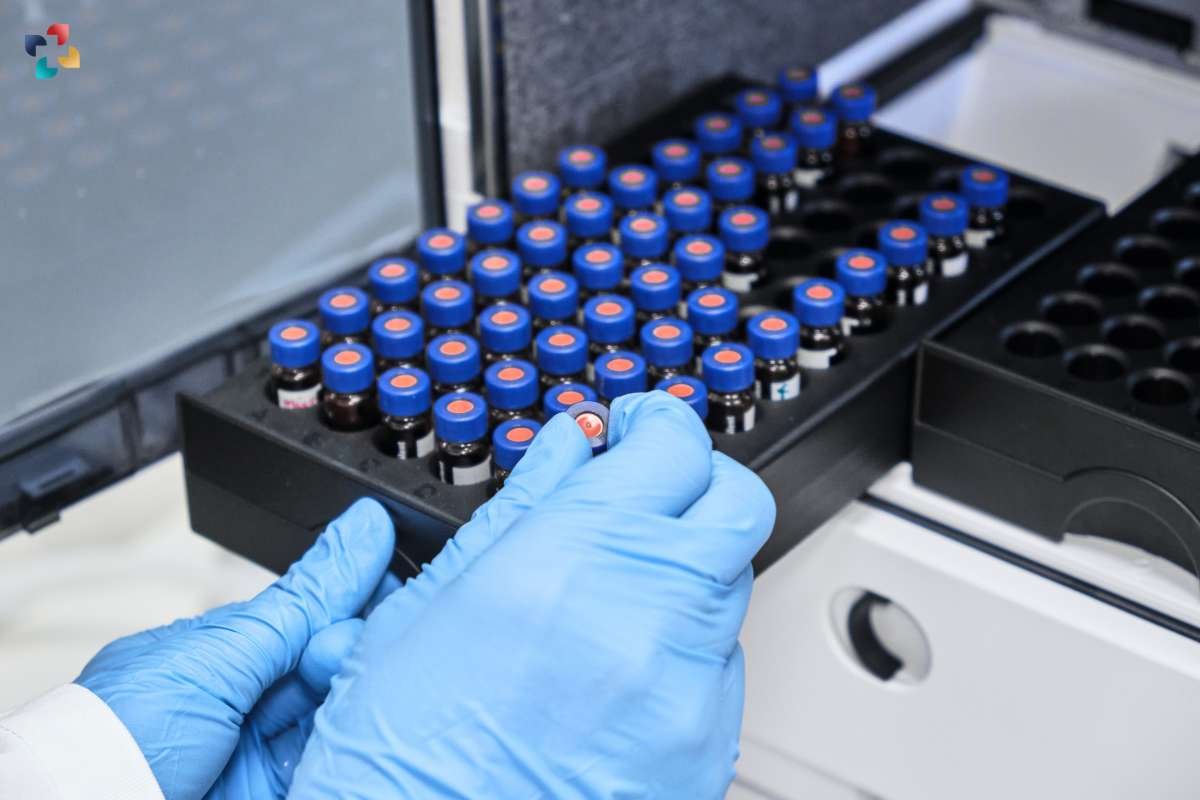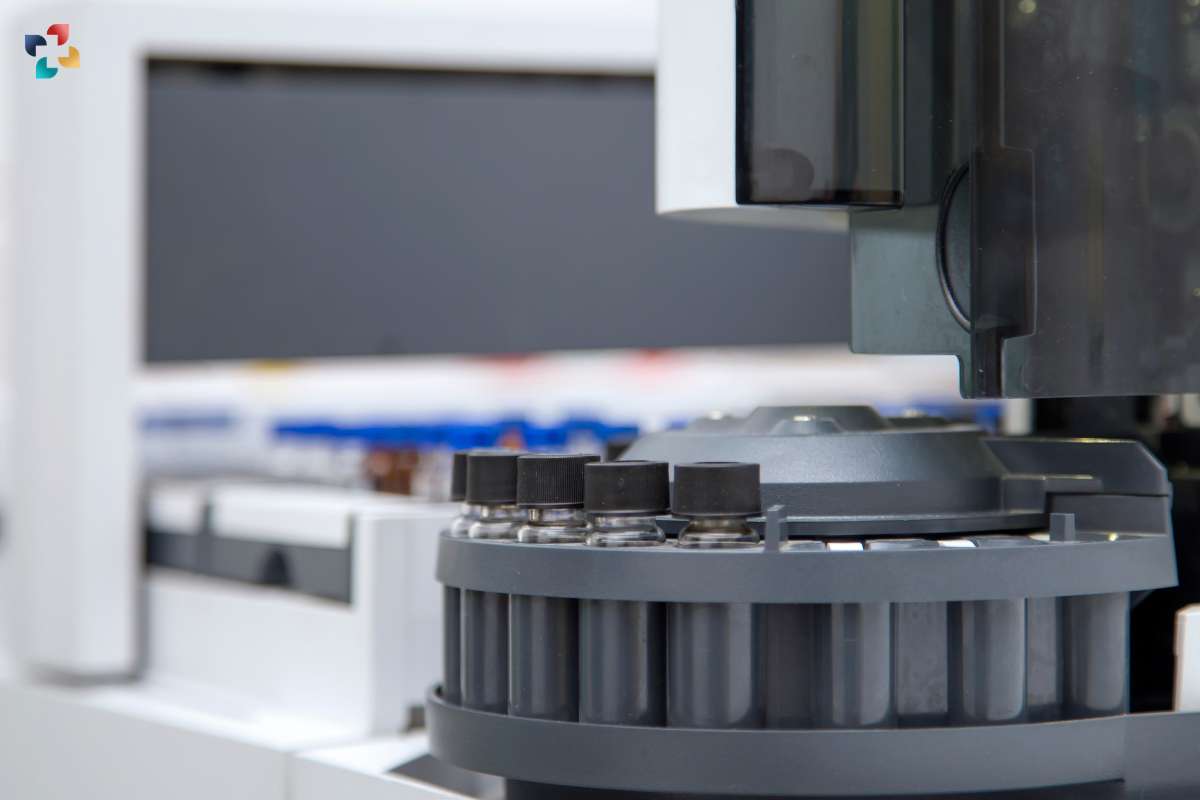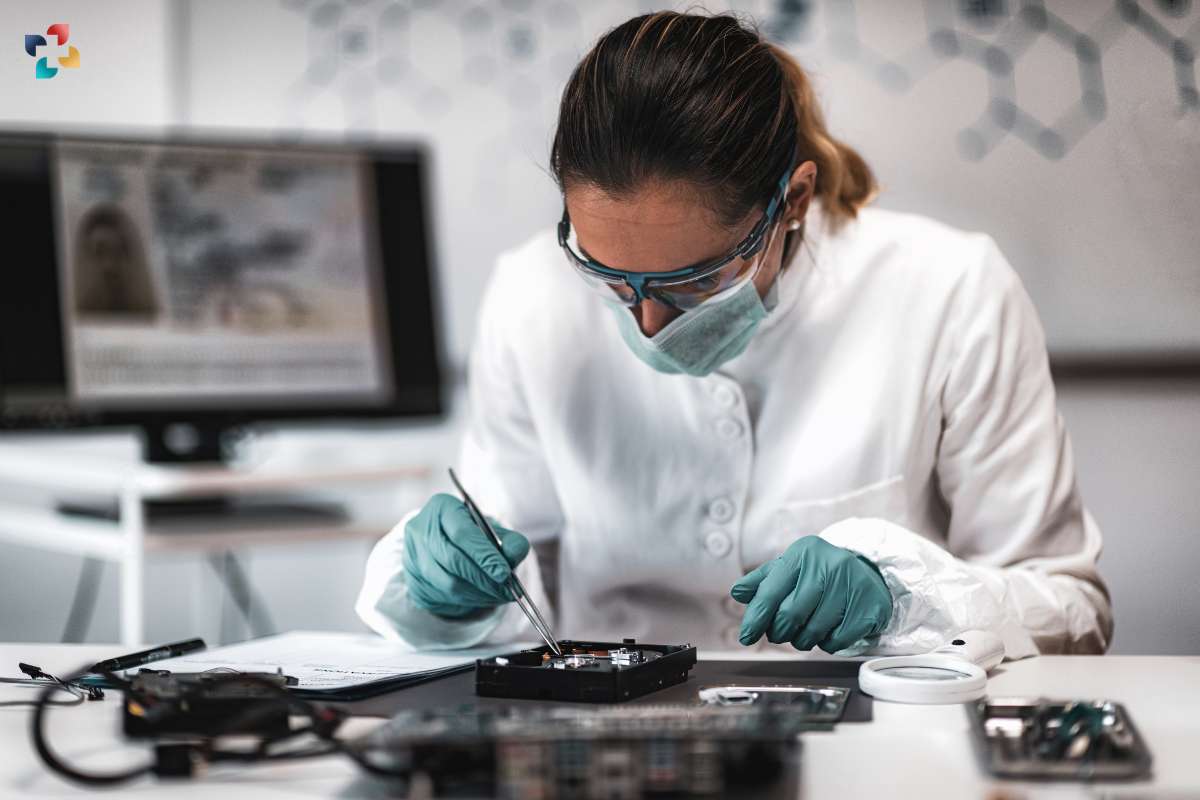Chromatography is a fundamental tool in forensic science that uses its analytical abilities to investigate crimes, solve puzzles, and bring people to justice. With unmatched sensitivity and precision, forensic investigators may now analyse complicated combinations of chemicals thanks to this advanced technique based on the ideas of separation science. Chromatography is essential to every step of a forensic inquiry, from identifying illegal narcotics to finding traces of residues and examining bodily fluids. This article takes the reader on a tour of the field of chromatography in forensic science, examining its uses, approaches, and contributions to the search for justice and the truth.
The Basics of Chromatography in Forensic Science
Chromatography in forensic science encompasses a diverse array of techniques designed to separate, identify, and quantify substances of interest within forensic samples. At its core, chromatography relies on the differential interaction between analytes and a stationary phase within a chromatographic system. As the sample components traverse through the system, they undergo partitioning between the stationary and mobile phases, leading to their spatial separation based on specific physicochemical properties such as polarity, size, and affinity.
Applications of Chromatography in Forensic Science

The applications of chromatography in forensic science are as diverse as the types of evidence encountered in criminal investigations. One of the most prevalent uses of chromatography is in drug analysis, where forensic scientists employ techniques such as gas chromatography (GC) and high-performance liquid chromatography (HPLC) to identify and quantify illicit substances in seized drug samples. From cocaine and heroin to methamphetamine and designer drugs, chromatography enables the accurate detection and profiling of controlled substances, aiding law enforcement agencies in combating drug trafficking and abuse.
Furthermore, chromatography plays a crucial role in toxicology, where it is utilized to analyze biological specimens such as blood, urine, and saliva for the presence of drugs, poisons, and metabolites. By separating and quantifying toxic compounds with high specificity and sensitivity, chromatography assists forensic toxicologists in determining the cause of death, assessing drug-related impairment, and providing crucial evidence in criminal investigations.
In arson investigations, chromatography is employed to analyze accelerants such as gasoline, kerosene, and alcohol residues in fire debris samples. Gas chromatography-mass spectrometry (GC-MS) is particularly valuable in identifying and profiling volatile compounds associated with arson, enabling forensic analysts to link suspects to the scene of the crime and establish patterns of arson-related behavior.
Moreover, chromatography finds applications in the analysis of trace evidence, including fibers, paints, explosives, and gunshot residues. By separating and characterizing trace materials recovered from crime scenes, chromatography assists forensic examiners in establishing associations between suspects, victims, and crime scenes, facilitating the reconstruction of events and the presentation of compelling evidence in court.
Methodologies of Chromatography in Forensic Science

In chromatography, the choice of technique and methodology depends on the nature of the sample and the specific analytical requirements of the investigation. Gas chromatography (GC) and liquid chromatography (LC) are two primary chromatographic techniques used in forensic science, each offering unique advantages and capabilities.
Gas chromatography (GC) is well-suited for the analysis of volatile and semi-volatile compounds, making it ideal for drug analysis, toxicology, and arson investigations. In GC, the sample is vaporized and injected into a chromatographic column packed with a stationary phase, where it undergoes separation based on differences in volatility and affinity. The separated analytes are then detected and quantified using a detector such as a flame ionization detector (FID) or a mass spectrometer (MS), providing detailed information about the composition and concentration of the sample components.
Liquid chromatography (LC), on the other hand, is preferred for the analysis of non-volatile and polar compounds, including drugs, metabolites, and environmental contaminants. In LC, the sample is dissolved in a liquid solvent (mobile phase) and pumped through a chromatographic column packed with a stationary phase. The analytes undergo separation based on differences in solubility, polarity, and interactions with the stationary phase, ultimately leading to their detection and quantification using a suitable detector such as a UV-visible detector or a mass spectrometer.
Contributions of Chromatography to Forensic Science

The contributions of chromatography to forensic science are manifold, encompassing its role in evidence analysis, case resolution, and the administration of justice. By providing forensic scientists and investigators with powerful tools for analyzing complex forensic samples, chromatography enhances the accuracy, reliability, and efficiency of forensic investigations, thereby strengthening the criminal justice system and safeguarding society against crime.
Conclusion
In conclusion, chromatography is an essential forensic science instrument that has revolutionised the field of forensic inquiry. Chromatography is the best method available for determining the identities, concentrations, and sizes of the chemicals present in forensic samples. Applications include arson investigations, toxicology, drug analysis, and trace evidence analysis. By exploiting chromatography’s analytical power, forensic scientists and investigators may solve complex criminal cases, provide compelling evidence in court, and ensure that justice is served. Chromatography continues to inspire innovation and creativity in the pursuit of truth, even as methods and technology evolve in the field of forensic research.
FAQs:
What is chromatography in forensic science?
Chromatography in forensic science is a technique used to separate, identify, and quantify substances within forensic samples. It involves the differential interaction of analytes with a stationary phase and a mobile phase, leading to their spatial separation based on specific physicochemical properties.
How is chromatography used in drug analysis?
Chromatography is extensively used in drug analysis to identify and quantify illicit substances in seized drug samples. Techniques such as gas chromatography (GC) and high-performance liquid chromatography (HPLC) are employed to separate and analyze drugs of abuse, aiding law enforcement agencies in combating drug trafficking and abuse.
What role does chromatography play in arson investigations?
In arson investigations, chromatography is used to analyze accelerants such as gasoline, kerosene, and alcohol residues in fire debris samples. Techniques such as gas chromatography-mass spectrometry (GC-MS) enable forensic analysts to identify and profile volatile compounds associated with arson, linking suspects to the scene of the crime.
How does chromatography assist in toxicology?
Chromatography plays a crucial role in toxicology by analyzing biological specimens such as blood, urine, and saliva for the presence of drugs, poisons, and metabolites. By separating and quantifying toxic compounds with high specificity and sensitivity, chromatography helps forensic toxicologists determine the cause of death, assess drug-related impairment, and provide crucial evidence in criminal investigations.
What are the primary chromatographic techniques used in forensic science?
The primary chromatographic techniques used in forensic science are gas chromatography (GC) and liquid chromatography (LC). GC is suitable for the analysis of volatile and semi-volatile compounds, while LC is preferred for non-volatile and polar compounds. These techniques, coupled with various detection methods, enable forensic scientists to analyze a wide range of forensic samples with precision and accuracy.








